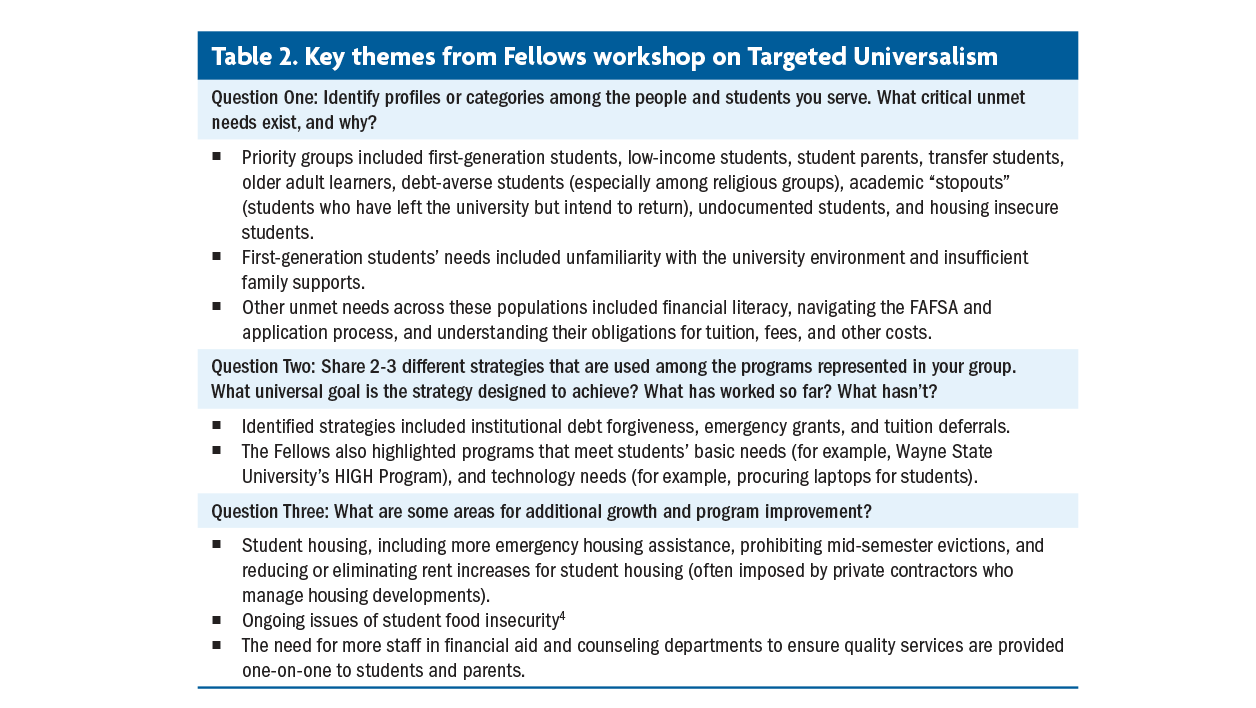Many higher education leaders believe any student should be able to attend any university without taking on unmanageable debt. Demographic trends suggest reaching this goal will be challenging.
Summary
College students are becoming not only more racially and ethnically diverse, but also older and more likely to be parents and workers. Accordingly, many of today’s students pursue higher education later in their lifecycles, requiring institutions to revisit how financial aid can address the full cost of attendance. This paper, the third in a series by the Association of Public and Land-grant Universities with support from the TIAA Institute, explores a variety of innovations that address college affordability and student debt burden.
Key Insights
- Re-imagining financial aid requires a deep understanding of the students institutions serve and adaptive solutions as student needs evolve.
- Tailoring initiatives and programs to meet the needs of specific student groups is a challenge.
- Creating a universal affordability goal requires input from students with financial need as well as support from practitioners who can advocate for these students.
- Collaboration among institutions can add value to campus innovations and help advance the goal of scaling effective practices.




